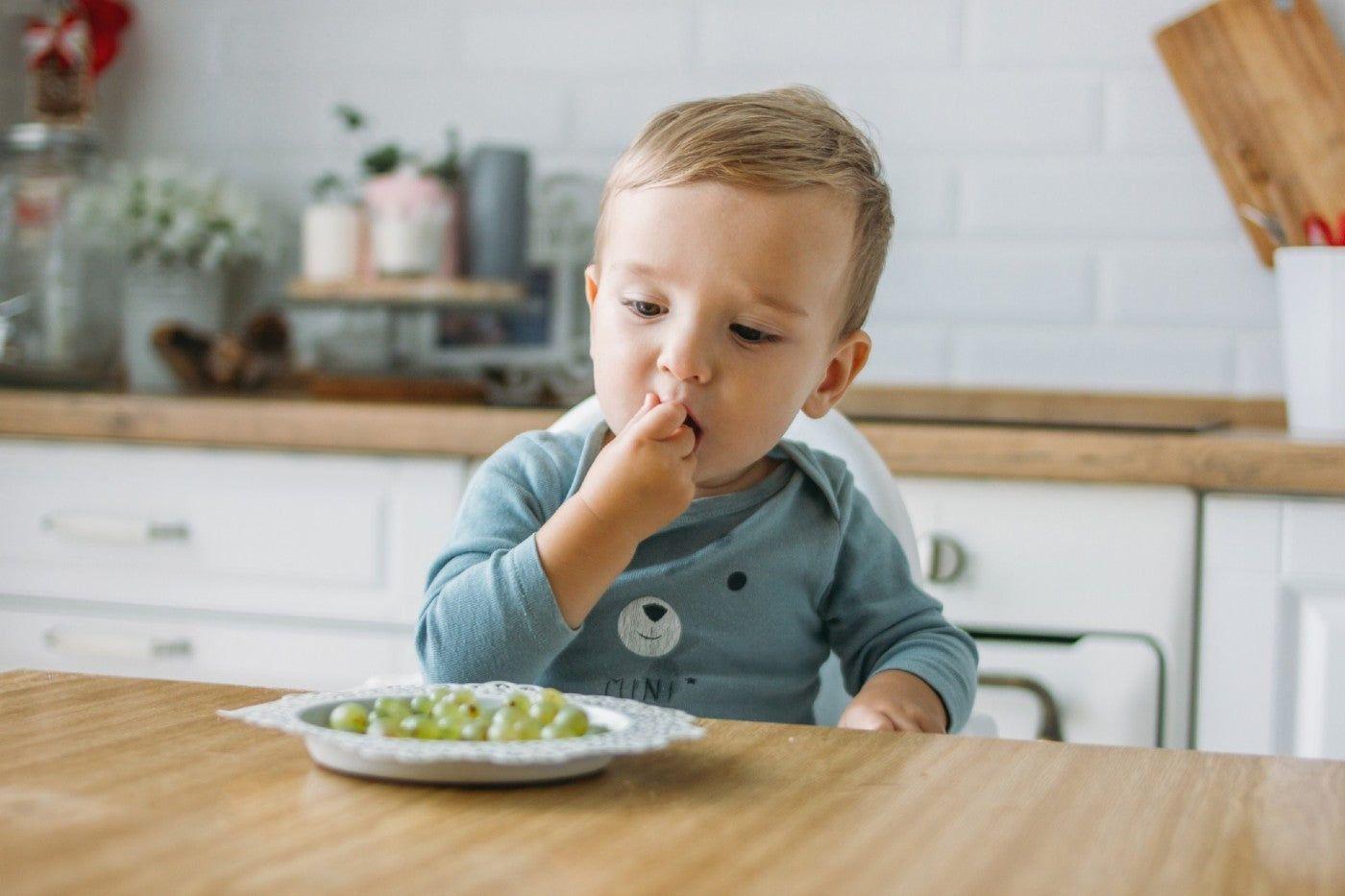TODDLER
How to Prevent Choking in Little Ones
It is exciting when your baby starts eating solid foods…but it can be scary, too. Here is how to keep your kid safe.

Written by
Happiest Baby Staff

SHARE THIS ARTICLE
PARENT PICKS
Bestsellers
TODDLER

Written by
Happiest Baby Staff

SHARE THIS ARTICLE
Bestsellers
It is exciting when your baby starts eating solid foods…but it can be pretty scary, too! After all, babies have small airways that can easily be obstructed and they are very new to the art of chewing and swallowing food, which makes them more vulnerable to choking. (Not to mention all the non-food items babies love to put in their mouths!)
Fortunately, babies are built with a strong gag reflex that does a great job of keeping them safe. And parents can do so much to prevent choking, as well. Here are some basic practices that will help keep your baby safe.
Cut foods the right way. Always cut round foods such as olives, berries, cherry tomatoes, and grapes into half-moon or triangle shapes, not rounds. For cylindrical foods, like hot dogs and string cheese, short and thin strips are safest. Overall, food pieces should be no larger than 13 mililmetres.
Serve soft, small foods. When your child is beginning with solids, make sure their food is soft and falls apart easily. That means, start with foods that are mashed, pureed, or strained and very smooth in texture.
Cook hard fruits and veggies. Foods like apples and carrots are great for Baby, just be sure to cook them so they can be easily mashed or pureed. Once your toddler is about a year old, feel free to grate hard fruits and veggies. Prepare meat properly. Remove fat, skin, and bones from poultry, meat, and fish, before you cook it for your baby. Blend or cut small slices across the grain of the meat.
Eat together. Eat at the same time as your little one so you can demonstrate (and narrate) safe eating strategies, like chewing and swallowing before talking and eating slowly.
Only dine at the table. If you only serve food at a table, you foster excellent table manners and—more importantly—you can minimise the risks of choking (like walking or running with food or eating while reclined). When your child is sitting at the table, they should be upright and alert.
Be aware of big kids. Many choking incidents can occur when an older kid gives a dangerous food (or a dangerous toy) to a younger child. That means, do not let your older kids feed the baby!
One way to babyproof for choking hazards is by doing daily sweeps to check floors and play areas for small objects that your baby could pick up and place in their mouths. Hoovering, regular pick-ups, and habits like keeping loose change in a change jar far away from your baby can go a long way to keep them safe.
In addition, keep these high-risk choking hazards away from your precious toddler:
If your little one is having some difficulty breathing, but can speak, has a strong cry, or has a strong cough, do not do anything! Your child’s cough is actually better than any back-smacks or abdominal thrusts you would perform. If any of the following symptoms occur, do not hesitate to have someone call 999 while you aid your child:
If your baby is not coughing forcefully or does not have a strong cry, lay your child face down, along your forearm, using your lap for support. Hold your infant’s chest in your hand and their jaw with your fingers. Point your baby’s head downward, lower than their body and give up to five quick, forceful blows between the shoulder blades.
If the object does not come out after five strikes, turn your baby face-up, still using your lap for support. Support your baby’s head and place two fingers on the middle of your child’s breastbone just below the nipples. Give up to five quick thrusts down, compressing the chest one third to one half the depth of the chest.
Next, perform five back blows followed by five chest thrusts until the object is dislodged. If your child becomes unresponsive, stops breathing, or turns blue, perform CPR. Alternatively, if you can see the object blocking your child’s airway, try to remove it with your finger.
Disclaimer: The information on our site is NOT medical advice for any specific person or condition. It is only meant as general information. If you have any medical questions and concerns about your child or yourself, please contact your health provider. Breastmilk is the best source of nutrition for babies. It is important that, in preparation for and during breastfeeding, mothers eat a healthy, balanced diet. Combined breast- and bottle-feeding in the first weeks of life may reduce the supply of a mother's breastmilk and reversing the decision not to breastfeed is difficult. If you do decide to use infant formula, you should follow instructions carefully.